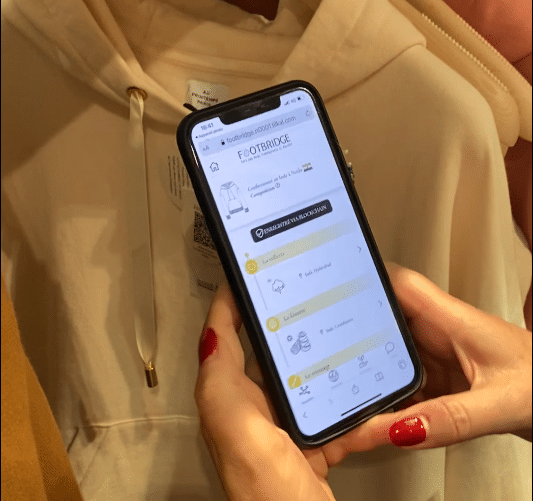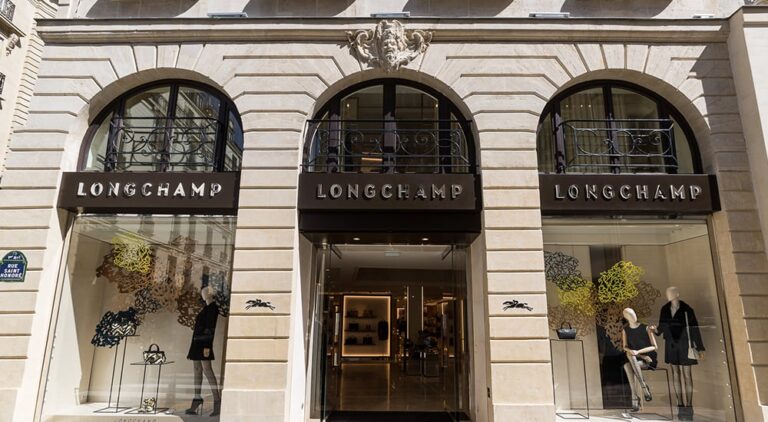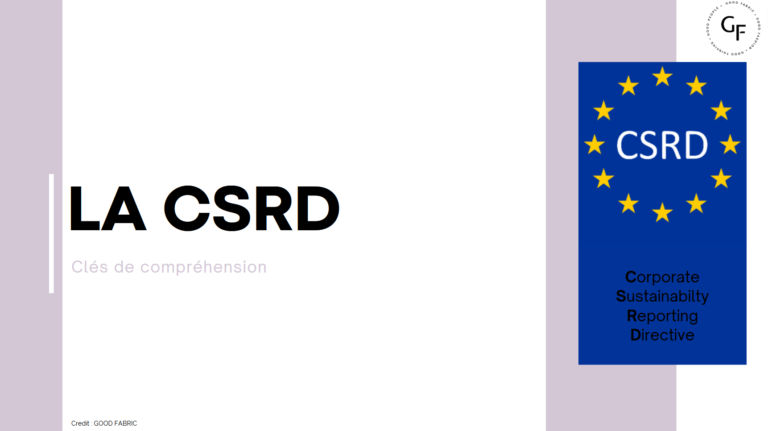Decree No. 2022-748 of April 29, 2022, published in the Official Journal on April 30, regarding consumer information on the environmental qualities and characteristics of waste-generating products, provides clarification and immediate implementation of new provisions corresponding to Article 13 of the AGEC law for the textile/clothing industry.
As a reminder, since January 1st , it has become prohibited to destroy unsold goods. This was the 1st step related to the law on waste and waste management. But as industry professionals predicted, les regulatory constraints on textile companies are becoming increasingly strong. And new provisions through this decree will have significant repercussions on organizations and work methods.
Sommaire
The obligation to communicate traceability from weaving/knitting
Informing consumers about the traceability related to the manufacturing of clothes is a real challenge for all brands and has become a regulatory obligation in recent days.
Complying with the law involves knowing the locations and actors involved in the weaving/knitting stages up to the making, including dyeing and printing, and making this information available to consumers through a digital medium for 2 years.
Decree No. 2022-748 of April 29, 2022, regarding consumer information on the environmental qualities and characteristics of waste-generating products, thus requires textile companies to communicate, for each product placed on the market, a set of information allowing its identification as well as that of all actors and producers involved in its manufacture.
This information must be communicated to the consumer in a digital form, at the latest at the time of the product’s sale, and for a minimum period of 2 years. The regulation concerning textile labeling will become increasingly strict, in order to allow consumers to make informed choices when purchasing their products, it is essential that brands provide them with increasingly precise information on the components of their products, as well as on their environmental impact.
Therefore, brands/stores with a turnover exceeding €50 million must now (for any purchase order placed with their suppliers after April 30, 2022) and no later than January 1, 2023:
- Trace all products from the weaving or knitting stage to the making
- Make this traceability information available and accessible to consumers
For brands that have not yet taken steps in this direction, it is a matter of knowing how to respond to these new constraints within such short deadlines.
Soon the environmental rating…
Beyond traceability, textile companies will also have to affix an environmental rating on all their products. This obligation will likely be applicable from 2024. The methodology for calculating this environmental rating is the subject of multiple working groups and reflections with ADEME, state services, and companies in the sector, including GOOD FABRIC, which is particularly working on developing an alternative method to more precisely address the environmental and social challenges of our industry.
The environmental rating of a product must notably take into account:
- The impact of the product throughout its life cycle (from the production of raw materials to end-of-life) on air, water, and soil
- The use of renewable or recyclable materials as well as the use of certified sustainable materials
- The weight or volume of the product The energy consumption during its manufacture and/or use
- The amount of water consumed during its manufacture and/or use
- Its durability and the ease with which it can be repaired, reused, or recycled
- Its end-of-life treatment (recycling, composting, incineration…)
- The working conditions of the people involved in its manufacture
Meanwhile, some companies are already working on this obligation and are trying to improve their manufacturing processes to limit the environmental impact of their products. However, it should be noted that calculating an environmental rating is a complex exercise that requires a lot of data and a certain level of maturity in managing environmental information.
To understand everything about Environmental Labeling, this article can help: Environmental Labeling, a transition accelerator for the clothing sector?
Calculate the eco-score of your clothing
Master the environmental impacts of your designs with our dedicated platform.
Schedule a demoSummary of Decree No. 2022-748 (Article 13 AGEC Law)
Summary of Decree No. 2022-748 (Article 13 AGEC Law) no later than January 1st, 2023, to any producer and importer with a turnover of more than €50 million and distributing more than 25,000 units per year. On January 1st, 2024, companies with a turnover of more than €20 million and 10,000 units will have to comply. And on January 1st, 2025, companies with a turnover of more than €10 million and 10,000 units.
Consumer information on the recyclability of textile products
Here are the new provisions on recyclability specified in Article R 541-221:
- A product can benefit from the mention « product predominantly recyclable » if it meets 5 criteria:
-
-
- Ability to be efficiently collected in France
- Ability to be sorted for recycling
- Absence of elements or substances disrupting sorting and recycling
- Ability for the recycled material produced to come from more than 50% of the collected waste mass
- Ability to be recycled on an industrial scale
-
- A product can have the mention « fully recyclable product » if it is composed of more than 95% of recycled material in a circular mode
- A product can have the mention « product recyclable in a closed loop » if the recycling of materials is predominantly reincorporated into equivalent nature products that meet the same use and destination without functional loss of the material.
Consumer information on the dangerousness of textile products
If a product contains a dangerous substance exceeding 0.1% of the thresholds imposed by the REACH standard, it must bear the mention « contains a dangerous substance » or « contains a substance of very high concern ». The information is completed with the name of each of the dangerous substances present, except for a few exceptions.
Consumer information on the traceability of textile products

Crédit Good Fabric
Consumer information relating to traceability for the products mentioned in the 11th
of Article L. 541-10-1 means the geographical indication of the country where
mainly each of the following operations takes place, when they exist:
- Weaving
- Dyeing and printing
- Making
Pollution from plastic microfibers
Clothes made of more than 50% synthetic fibers must bear the mention « releases plastic microfibers into the environment during washing ».
Other provisions of the decree related to the AGEC law
The decree provides that all this information must be available in a digital format, accessible without charge at the time of purchase, and reusable in a way that allows aggregation.
Furthermore, the information must be available for 2 years the last unit of the product concerned is placed on the market.
A garment or packaging cannot bear the mentions « biodegradable » or « environmentally friendly ».
FOOTBRIDGE solutions
The SaaS platform FOOTBRIDGE was designed to meet several challenges:
- The increasingly strong demand for transparency from consumers
- The need for all brands to accelerate eco-design and better control their supply chain
- Meeting the regulatory requirements of the AGEC law in France and European regulation for the textile and clothing sector.
The article Les 6 atouts de FOOTBRIDGE details how the solution allows for effective tracing of all orders.
In addition to traceability, the measurement of social and environmental impacts offered within the service range will help teams better eco-design to reduce the footprint of collections and improve the scores related to environmental labeling. Scores that will be automatically calculated by FOOTBRIDGE.
The FOOTBRIDGE mobile application already enables brands to provide consumers with full traceability information (including end-to-end traceability) and lifecycle analysis for each model.
In any case, the AGEC law imposes new requirements on brands in terms of consumer information. This will require using the right « tools » and immediately adapting one’s organization.
The urgency is evident given the imposed schedule and the time needed to deploy such projects.
8 frequently asked questions about article
- What is Article 13 of the AGEC law and its application?
Article 13 of Law No. 2020-105 of February 10, 2020, on the fight against waste and the circular economy, applied by Decree No. 2022-748 of April 29, 2022, requires companies, especially in the textile sector, to provide detailed information on the environmental qualities and characteristics of waste-generating products.
This measure aims to strengthen the extended producer responsibility and the fight against waste by informing the consumer about the environmental aspects of products.
- How does Article 13 affect consumer information in the textile sector?
According to Article 13, companies must trace and make accessible information on all stages of a textile product’s manufacturing, from weaving/knitting to making, including dyeing and printing processes.
This information, including on the presence of dangerous substances and the working conditions of the people involved, must be made available to the consumer in a digital and reusable form, free of charge, at the time of purchase and maintained for two years after the product is placed on the market.
- What are the new requirements for product recyclability according to Article 13?
Article 13 specifies recyclability criteria in the environmental code, stating that a product can be considered “predominantly recyclable” if it meets five specific criteria related to collection, sorting, the absence of disruptive elements, industrial recycling capacity, and the proportion of recycled material.
A product can be “fully recyclable” if it contains more than 95% recycled material in a circular mode, and “recyclable in a closed loop” if its recycling predominantly reincorporates the materials into equivalent nature products that meet the same use and destination without functional loss of the material.
- When will the environmental rating on products be applicable according to Article 13?
From 2024, textile companies will be required to affix an environmental rating on their products, according to the modalities set by working groups including ADEME and state services.
This rating must take into account the product’s impact on the environment throughout its life cycle, the use of renewable or recyclable materials, energy and water consumption, durability, ease of repair, reuse or recycling, as well as the working conditions of the people involved in its manufacture.
- What are the restrictions on packaging mentions imposed by Article 13?
The decree prohibits garments and packaging from bearing the mentions “biodegradable” or “environmentally friendly”. Additionally, garments made of more than 50% synthetic fibers must indicate that they “release plastic microfibers into the environment during washing”.
This measure aims to raise consumer awareness of the specific environmental impacts related to these products.
- What are the implementation modalities of Article 13 for textile companies?
Companies with a turnover exceeding €50 million and distributing more than 25,000 units per year must comply with the decree from April 30, 2022, and no later than January 1, 2023.
These modalities include the traceability of products from weaving/knitting to making and the availability of this information in a digital form accessible to consumers.
- What are the progressive application thresholds of Article 13 AGEC law for companies?
The decree applies progressively: from April 30, 2022, for companies with a turnover exceeding €50 million, from January 1, 2024, for those with a turnover of more than €20 million, and from January 1, 2025, for companies with a turnover exceeding €10 million.
Each threshold is associated with a minimum volume of 10,000 units distributed annually.
- How does Article 13 impact consumer information on dangerous substances?
If a product contains a dangerous substance beyond 0.1% of the REACH thresholds, it must bear the appropriate mention, completed with the name of each dangerous substance present.
This is part of the AGEC law’s intention to provide transparent information to the consumer on the environmental qualities and characteristics of products.







